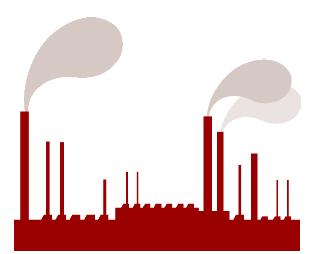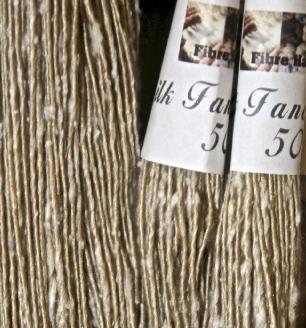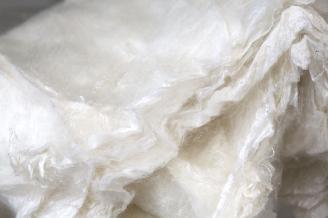 |
 |
 |
||
Silk is the ultimate natural luxury raw material and fibre. The cultivation of domesticated silkworms is, by nature, an inherently sustainable process, but there are ethical issues; the commercial production of silk involves destroying the silkworm before it emerges from its cocoon. Sericulture is the term used to describe this production of cultivated silk. Intensive silkworm breeding depends on a highly developed agricultural system capable of sustaining the large-scale cultivation of mulberry trees, which are the moth’s food source. Silk fabrics, when produced by weavers on handlooms have a near zero energy footprint. Silk is a renewable resource that has the potential for sustainable fabric production, provided best practice production is sought. Fertilizer and pesticide use are not so much of an issue in the production of silk, as the moths are very sensitive to poisoning from toxins. However, the cocoon degumming process can involve chemicals and detergents that may be discharged into the groundwater.
The cocoons are first thrown into a cauldron of boiling water, to soften the sericin gum that binds the filaments together. Once the ends of the filaments have been located by brushing the prepared cocoons are then transferred to reeling basins where a number of cocoons are unwound simultaneously. The resulting filaments are grouped together to produce a single thread, and are taken by the machine feeding device, and then transferred to the reeling or winding machines. Several filaments at a time are reeled onto a bobbin to produce one long smooth thread. Finally the reeled threads are thrown. Throwing is the twisting together of two or more threads together to give greater strength and substance to the yarn. The filament from a single cocoon is not strong enough to withstand weaving, so four to six filaments are twisted together. The finest fabrics are woven from thread made by reeling together the filaments of only four cocoons.
As the process of harvesting the silk filaments from a cultivated cocoons kills the larvae, the ethics of sericulture has been criticised by animal rights groups on the grounds that traditional silk production destroys the emerging animals, preventing them from living out their natural lifecycle. The provenance of silk has been controversial from an ethical perspective for many centuries. Buddhists traditionally only allowed the use of wild silks that allowed the creature to live. Mahatma Gandhi was also critical of silk production based on the Jain Indian Ahisma philosophy to “not hurt any living thing’. The following silk alternatives are common to the Indian subcontinent: Tussah or wild silk is naturally a more ethical choice, and may be referred to as ‘vegetarian’ silk. It does, however have a very specific ‘rustic’ look and dry handle. Wild, or tussah silks, are produced by gathering or cultivating cocoons in the open forest, after the moth has emerged. This type of farming uses no hazardous chemicals and its production can encourage forest preservation and provide year round income for millions of tribal people in India. The cocoons are collected after the moth has emerged naturally. Silk that is degummed in factories with effluent treatment protocols should be sourced.
Peace silk moths are allowed to emerge from their cocoons naturally and live out their full life cycle. Their silk is de-gummed and spun like other fibres, instead of being reeled in one continuous thread. The resulting yarn is soft and fluffy. The silk can still be spun like other fibers if the moths are allowed to emerge, but the quality of the silk is not as good as that of cultivated silk. Eri silk cocoons are raised in a natural situation with minimal interference from man, and are also considered to be equivalent to ‘organically grown’ It is a type of wild silk found only in India. The cocoons are roughly the same size as that of cultivated silk, and are characterised by a very light colour, almost as white as the Bombyx Mori (cultivated) cocoons. The cocoons are gathered from a large area in the wild, and the moths are allowed to emerge; the cocoons are cut at this stage to allow them to escape. The cocoons are made up of several layers of silk. The outer layers are relatively soft and fluffy. Muga silk is a special type of wild silk. This species lives only in a restricted area in Assam, India. The villagers in this forested region also gather the cocoons in the wild and then semi-cultivate them from the eggs of the wild moths that emerge. |
SILK
 PROCESSING
PROCESSING
 SUSTAINABLE ALTERNATIVES
SUSTAINABLE ALTERNATIVES
